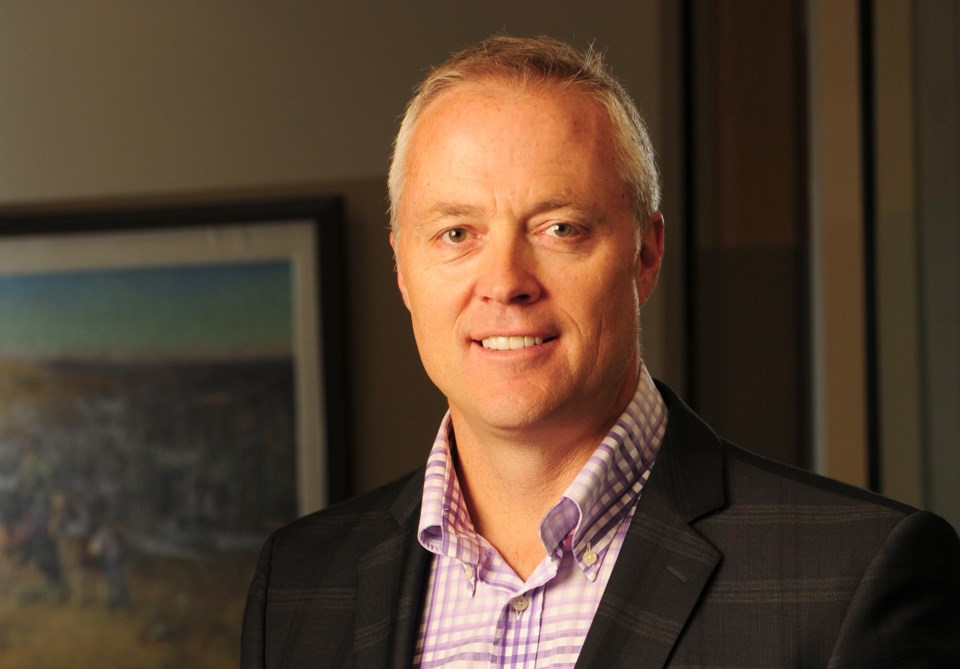Regina ŌĆō Lex Capital Management has raised $127.5 million so far in its first close of its fourth energy private equity fund, the firmŌĆÖs fifth fund overall.
But thereŌĆÖs a big change in who is investing right now, according to Craig Lothian, managing partner, who spoke to Pipeline News on Jan. 4.
For LexŌĆÖs initial funds, nearly all the money invested came from Canada, and 85 to 90 per cent of those funds were from Saskatchewan. Of the $127.5 million raised so far for their fourth energy fund, currently 65 per cent is American. As they move towards their goal of $200 million by March 31, Lothian expected the overall total to be 85 per cent American investment. ThatŌĆÖs up from 61 per cent US-based investors in their last fund.
The money raised is intended to go into light and medium crude oil. That means no oilsands, no natural gas, no heavy oil. In 2015, Lex raised $145 million over three closings, so coming up with $127.5 million on their first close is a positive sign. Lothian expects by the end of January they will be in the $160 to $170 million range. HeŌĆÖs confident they will hit the $200 million goal by March 31.
ŌĆ£What is really happening is Canadian investors are on the sidelines. We can basically now say that retail investors are for the most part not investing,ŌĆØ Lothian said. That includes high-net-worth individuals in Canada.
And for that, heŌĆÖs pretty sure who is to blame. ŌĆ£When weŌĆÖre talking to both retail and institutional investors in Canada, you can tell the incessant stream of anti-oil rhetoric we get every day from (Prime Minister Justin) Trudeau, from CBC, from CTV for that matter, from all the environmental activists in Canada has taken its toll. People are just spooked by the narrative theyŌĆÖre hearing and seeing in Canada, and theyŌĆÖre not prepared to jump in,ŌĆØ Lothian said.
He thinks they may raise $30 to $50 million from Texas, of all places. He noted, ŌĆ£To think a Saskatchewan-based energy fund can raise money in Texas is kind of head-slapping. What youŌĆÖre hearing down there is they look at Trudeau and say heŌĆÖs a blip. You guys are going to figure it out. YouŌĆÖre going to get rid of him maybe sooner rather than later. Governments come and governments go, the worldŌĆÖs burning 100 million barrels a day of oil, plus, and growing, and we need to be invested in that. Where else are we going to invest it?ŌĆØ
Lothian went on, ŌĆ£The criticisms have been, at times, a little hard to hear and swallow, that your governmentŌĆÖs a joke. But they quickly say youŌĆÖre fighting a lot of headwinds up there, but where else are these new barrels going to come from, as the world burns more hydrocarbons? Where else are we going to invest, because weŌĆÖre not going to invest in Saudi Arabia, or Nigeria, or Venezuela, or Mexico. We canŌĆÖt invest in Russia.ŌĆØ
He explained that the Permian and Eagle Ford plays in Texas are significantly overheated, for land and drilling costs. In contrast, CanadaŌĆÖs oilpatch is effectively a bargain in comparison. It attracts contrarian institutional investments, jumping in with both feet.
ŌĆ£One of the investors weŌĆÖre talking to in the U.S. said we donŌĆÖt understand why Canadians are allowing your government to gang rape your energy industry, but they are, and if you are prepared to allow your government and environmental activists to do that to you, Americans are going to be only too happy to jump in and own your industry,ŌĆØ Lothian recalled.╠²╠²
ŌĆ£I bet I heard 30 comments along those lines, just saying, ŌĆśYou guys have set yourselves up to have a discounted energy structure, the lack of pipelines, etc., allowing environmental activists, pushing a carbon tax when none of your competitors around the world are. So youŌĆÖve put yourselves on sale, and weŌĆÖre only too happy to buy that.ŌĆÖ
ŌĆ£We were hearing that probably six to eight months ago when we went out to do some pre-marketing, to test the waters. We were fearful, and we were right, that we werenŌĆÖt going to get a lot of support in Canada, so we went on the road in the U.S., in New York, Boston, Minnesota, Denver, Dallas. We were hearing those kind of comments, and hearing in also in Toronto, Calgary, and right at home in Regina, ŌĆśI donŌĆÖt know. I donŌĆÖt think IŌĆÖm going to be prepared to invest,ŌĆÖŌĆØ he said.
Institutional investors in the US, saw that they could come in and buy at the low point of the commodity cycle, Lothian said. They can buy heavily discounted oil production as a result of transportation issues, with a Canadian dollar at 73 cents, and then when they ultimately repatriate their funds, the Canadian dollar is expected to have appreciated, and they will make a higher return on that.
Their last fund saw 65 to 70 per cent invested in Alberta in a variety of properties including the new Duvernay play, with the remainder in Saskatchewan. This time around, he said they have for or five deals they are looking at in Saskatchewan and Alberta. Each of those deals in their pipeline are with management teams theyŌĆÖve worked with before.
Lothian explained a flowing light oil barrel in Alberta or Saskatchewan, through corporate acquisitions, is about $35,000 to $40,000, while that same barrel in the Permian might be $150,000 to $160,000. Thus, thereŌĆÖs a better upside in Canada.
╠²
See related story╠²
╠²




